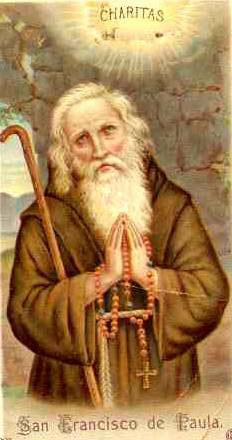We ask you, urgently: don't scroll past this
Dear readers, Catholic Online was de-platformed by Shopify for our pro-life beliefs. They shut down our Catholic Online, Catholic Online School, Prayer Candles, and Catholic Online Learning Resources essential faith tools serving over 1.4 million students and millions of families worldwide. Our founders, now in their 70's, just gave their entire life savings to protect this mission. But fewer than 2% of readers donate. If everyone gave just $5, the cost of a coffee, we could rebuild stronger and keep Catholic education free for all. Stand with us in faith. Thank you.Help Now >
Temptation of Christ
FREE Catholic Classes
In the Catholic translation of the Bible , the word "temptation" is used in various senses, the principal of which are the following:
- the act of testing or trying ( Deuteronomy 4:34 ; Tobit 2:12; Luke 22:28 ; etc.);
- enticement to evil ( Matthew 26:41 ; 1 Corinthians 10:13 ; etc.);
- the state of being tempted ( Matthew 6:13 ; Luke 4:13 ; etc.);
- that which tempts or entices to evil ( James 1:12 ; 2 Peter 2:9 ; etc.);
- the name of a place ( Exodus 17:7 ; Deuteronomy 6:16 ; etc.)
Like Adam, Christ (the second Adam) endured temptation only from without, inasmuch as His human nature was free from all concupiscence ; but unlike Adam, He withstood the assaults of the Tempter on all points, thereby affording His mystical members a perfect model of resistance to their spiritual enemy, and a permanent source of victorious help ( Hebrews 4:15-16 ). In our first three Gospels ( Matthew 4:1-11 ; Mark 1:12-13 ; Luke 4:1-13 ), the narrative of Christ's temptation is placed in immediate connexion with His baptism on the one hand, and with the beginning of His public ministry on the other. The reason of this is clear. The Synoptists naturally regard the baptism of Christ as the external designation of Jesus from above for His Messianic work to be pursued under the guidance of the Holy Spirit bestowed upon Him on this occasion; and they no less naturally regard Christ's sojourn in the desert where He was tempted, as His own immediate preparation for that great work under the guidance of the same Holy Spirit. As our first three Gospels agree concerning the time to which they assign the temptation of Christ, so they are at one in ascribing the same general place to its occurrence, viz. "the desert ", whereby they no doubt mean the Wilderness of Judea, where Jesus would indeed be, as St. Mark says: "with beasts". From St. Mark (i, 13) -- with whom compare St. Luke iv, 2 -- we learn that Jesus Christ was tempted during the forty days which He spent in the desert (cf. St. Augustine, "Harmony of the Evangelists ", II, xvi), so that the three onsets given in detail by St. Matthew and St. Luke are apparently the three final assaults of Satan against Christ. The first of these assaults is directly connected in both St. Matthew and St. Luke with the prolonged fast of Jesus in the wilderness. The Tempter suggested to Jesus that He should use His miraculous power to relieve His hunger, by changing into bread the loaf-like flints of the desert. The two other assaults are given in a different order, St. Matthew adhering probably to the order of time, and St. Luke to that of place. The spot pointed out by tradition as the summit from which Satan offered to Jesus dominion over all earthly kingdoms is the "Quarantania", a limestone peak on the road from Jerusalem to Jericho. As regards the Temple's pinnacle from which the Tempter bade Jesus cast Himself down, it was not the top of the House of Yahweh, but probably the roof of Solomon's portico from which, at a later date, St. James was actually hurled to the pavement below ( Eusebius, "Hist. eccl.", IV, xiii).
According to St. Luke (4:13) , after having subjected Christ to all kinds of temptations -- the Messianic import of which is undoubted -- Satan withdrew, awaiting a favourable opportunity like that which followed Christ's prolonged fast in the desert. The later conflict thus alluded to is no other than that of Christ's Passion (cf. Luke 22:53 ; John 14:30 ). The ministry of angels to Jesus, in connection with His temptation, is mentioned in Mark, i, 13. Satan's exact manner of appearance to Jesus is not stated by the Evangelists. Despite the difficulties urged, chiefly by non-Catholic scholars, against the historical character of the three temptations of Jesus, as recorded by St. Matthew and St. Luke, it is plain that these sacred writers intended to describe an actual and visible approach of Satan, to chronicle an actual shifting of places, etc., and that the traditional view, which maintains the objective nature of Christ's temptations, is the only one meeting all the requirements of the Gospel narrative.
Join the Movement
When you sign up below, you don't just join an email list - you're joining an entire movement for Free world class Catholic education.

-

- Stations of the Cross
- Easter / Lent
- 5 Lenten Prayers
- Ash Wednesday
- Living Lent
- 7 Morning Prayers
- Mysteries of the Rosary
- Litany of the Bl. Virgin Mary
- Popular Saints
- Popular Prayers
- Female Saints
- Saint Feast Days by Month
- Pray the Rosary
Pope Francis’ April Prayer Intention: Using Technology to Strengthen Human Connections
Finding Peace Through Prayer in a World of Worry
Trump Administration Withholds Federal Grants from Planned Parenthood Over DEI and Civil Rights Concerns
Daily Catholic
 Daily Readings for Wednesday, April 02, 2025
Daily Readings for Wednesday, April 02, 2025 St. Francis of Paola: Saint of the Day for Wednesday, April 02, 2025
St. Francis of Paola: Saint of the Day for Wednesday, April 02, 2025 Prayer for God's Help in Daily Actions: Prayer of the Day for Friday, March 14, 2025
Prayer for God's Help in Daily Actions: Prayer of the Day for Friday, March 14, 2025 Daily Readings for Tuesday, April 01, 2025
Daily Readings for Tuesday, April 01, 2025 St. Hugh of Grenoble: Saint of the Day for Tuesday, April 01, 2025
St. Hugh of Grenoble: Saint of the Day for Tuesday, April 01, 2025- To Perceive Animals as God's Gifts: Prayer of the Day for Thursday, March 13, 2025
![]()
Copyright 2025 Catholic Online. All materials contained on this site, whether written, audible or visual are the exclusive property of Catholic Online and are protected under U.S. and International copyright laws, © Copyright 2025 Catholic Online. Any unauthorized use, without prior written consent of Catholic Online is strictly forbidden and prohibited.
Catholic Online is a Project of Your Catholic Voice Foundation, a Not-for-Profit Corporation. Your Catholic Voice Foundation has been granted a recognition of tax exemption under Section 501(c)(3) of the Internal Revenue Code. Federal Tax Identification Number: 81-0596847. Your gift is tax-deductible as allowed by law.


 Daily Readings for Wednesday, April 02, 2025
Daily Readings for Wednesday, April 02, 2025 St. Francis of Paola: Saint of the Day for Wednesday, April 02, 2025
St. Francis of Paola: Saint of the Day for Wednesday, April 02, 2025 Prayer for God's Help in Daily Actions: Prayer of the Day for Friday, March 14, 2025
Prayer for God's Help in Daily Actions: Prayer of the Day for Friday, March 14, 2025 St. Hugh of Grenoble: Saint of the Day for Tuesday, April 01, 2025
St. Hugh of Grenoble: Saint of the Day for Tuesday, April 01, 2025

